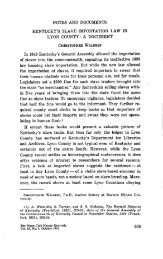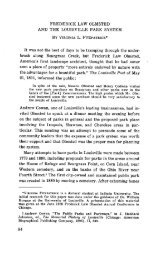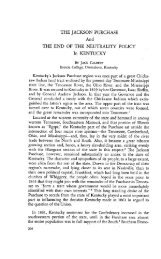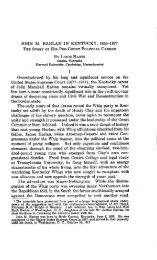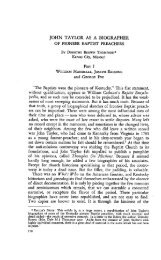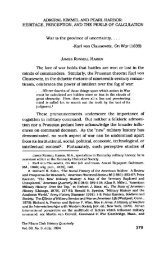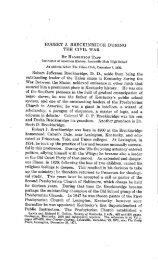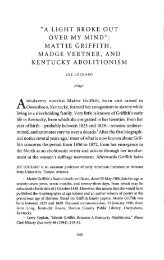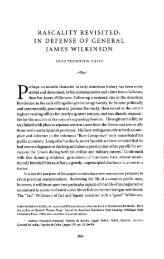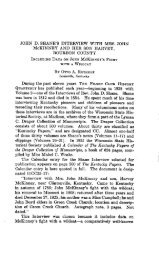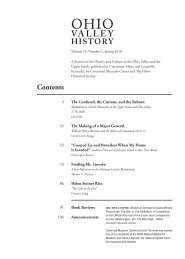Himlerville: Hungarian Cooperative Mining in Kentucky - The Filson ...
Himlerville: Hungarian Cooperative Mining in Kentucky - The Filson ...
Himlerville: Hungarian Cooperative Mining in Kentucky - The Filson ...
Create successful ePaper yourself
Turn your PDF publications into a flip-book with our unique Google optimized e-Paper software.
1992] HimlerviUe 525<br />
$150,000 was raised to build a large power plant. This money<br />
was used to purchase five boilers of two hundred horsepower<br />
capacity to generate electricityto run the m<strong>in</strong>es and light homes<br />
<strong>in</strong> <strong>Himlerville</strong>. Every piece of mach<strong>in</strong>ery <strong>in</strong> the power plant had<br />
a back-up system <strong>in</strong> case of emergency breakdowns)7 <strong>The</strong> construction<br />
of this power plant represented the first commercial<br />
use of electricity <strong>in</strong> Mart<strong>in</strong> County. Wires were strung to most<br />
of the <strong>Hungarian</strong> homes, and if native mounta<strong>in</strong>eers wanted<br />
electricity they could hook on to the Himlerv<strong>in</strong>e l<strong>in</strong>es. While not<br />
all mounta<strong>in</strong> homes were electrically lighted, enough were to<br />
change life on farms <strong>in</strong> the area.<br />
<strong>The</strong> perpendicular m<strong>in</strong>e shaft extended seventy-six feet <strong>in</strong>to<br />
the ground. It was fully l<strong>in</strong>ed with concrete for safety and sloped<br />
at a forty-five-degree angle through solid rock for another sixty<br />
feet before level<strong>in</strong>g off. An elevator, a supply track, and a stairway<br />
ran through the shaft. Before the shaft was completed<br />
10,000 tons of coal were brought to the surface through the<br />
elevator shaft and burned <strong>in</strong> the powerhouse or sold for local<br />
consumption,a At its face, the coal seam averaged from fiftyfour<br />
to sixty-six <strong>in</strong>ches <strong>in</strong> thickness.4° This seam, which geolo-<br />
gists called Number Two Gas or Buck Creek block, was worked<br />
by the slope-m<strong>in</strong><strong>in</strong>g method as the coal lay below the tipple<br />
mouth. Three of the newest models of fifty-horsepower Goodman<br />
shortwall mach<strong>in</strong>es were used to undercut the coal seam. Highpowered<br />
drills were used to bore holes <strong>in</strong> which explosives were<br />
placed to blast the undercut coal loose from the m<strong>in</strong>e face.<br />
M<strong>in</strong>ers then loaded the coal <strong>in</strong>to special buggies which were<br />
conveyed to the tipple by Ironton Storage Battery locomotives.<br />
Workplaces were ventilated by electrically driven fans. <strong>The</strong> m<strong>in</strong>e<br />
was electrically lighted, and all heavy equipment was operated<br />
by electricity.41<br />
37 <strong>Kentucky</strong>, Department of M<strong>in</strong>es, Annual Report, 1922, p. 286.<br />
38 Bagger, "Himler," 150.<br />
39 Ibid.<br />
40<strong>Kentucky</strong>, Department of M<strong>in</strong>es, Annual Report, 1923, p. 305; 1926, p. 53.<br />
41 Ibid., 1920, p. 201; 1922, p. 286; 1923, pp. 267-68.



